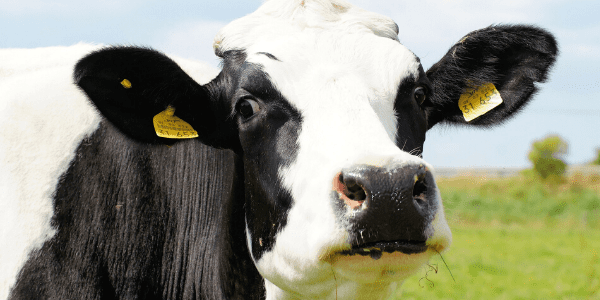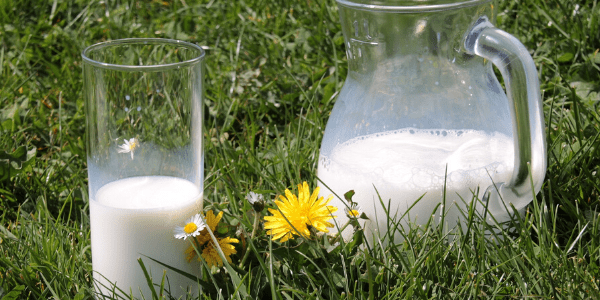We have more and more offers in the market for this popular drink and more and more confusion of which is the best for each person or situation. We analyze the different proposals in this milky way of milks, without taking into account all the alternatives vegetables that exist today. In western countries almost the 90% of milk that is consumed is cow. Its consumption has decreased since 2000 by more than 25%, replaced by other options in search of a better diet. Also due to the appearance of many people intolerant to lactose and a tendency to eliminate this ingredient from diets. Let's learn more about what each of the leches that we can drink!
Cow milk
It is the most consumed milk and is considered one of the most complete foods. Contains high content protein, fats, carbohydrates, both water-soluble and fat-soluble vitamins and minerals. It is low in calories. It is a great source of football, a vital element at the time of growth. It must be said that once the formation of the skeleton is finished it helps to do so, nor in the case of suffering Osteoporosis. Although it is very important in periods of growth and menopause.
This main variety among the milky way of milks Helps lower heartburn due to its almost neutral Ph (6,6). It has also been proven that it facilitates the elimination of uric acid through the urine, helping to lower its value in the blood. It helps the proliferation of the intestinal flora by synthesizing group B vitamins.
However, it is not recommended for people with lactose intolerance. Consumption of Cow milk It can cause colic depending on the person and accentuate problems of rheumatoid arthritis and iron anemia. Like all ruminant animal origin they contain a level high casein. This could lead to a risk of cardiovascular problems.

La whole cow's milk It has 61 Kcal a protein of 3,5 and a level of fat of 3,6 and 4,7 of lactose per 100 cc. In the manufacturing process, the fat is extracted and it is added to the level that each brand determines to produce a product. semi-skimmed or skimmed, remaining as follows:
- In the case of semi-skimmed milk, it has 48 Kcal a protein of 3,3 and a level of fat of 1,6 and 4,7 of lactose per 100 cc.
- Skimmed milk has 37 Kcal, a protein of 3,5 and a level of fat of 0,20 and 4,7 of lactose per 100 cc.
There are other varieties on the market whose origin is from the same animal:
Lactose-free cow's milk
It is a milk-based preparation with the same properties as Normal. This can be found in the options skimmed and semi-skimmed. The only difference is that an enzyme called lactase. This breaks lactose into two sugars such as galactose and glucose, eliminating the lactose form. For this reason it is somewhat sweeter.
Recommended not completely eliminate lactose, since it facilitates the absorption of football in the body. Thus we can find products with different levels of lactose depending on the manufacturer. Low-lactose or lactose-free calls fall into this category within the milky way of milks.
Omega cow's milk
In this dairy preparation all the saturated and replaced by polyunsaturated fats. All this facilitates the regulation of cholesterol. The preparation is usually made from skimmed or semi-skimmed milk. The origin of these fats can be vegetables or animals. In the preparation they are usually used oily fish oils as is the case with sardines and horse mackerel.

Cow's milk with calcium
With the calcium addition This variety is born from milk in the form of calcium phosphate, calcium lactate, calcium citrate or calcium carbonate. There are also technologies that allow you to concentrate the calcium that the product itself already contains so as not to have to add it. With this extra, it helps bone and dental problems. It also helps induce sleep and calm. The consumption of this milk is especially important in periods of growth, pregnancy and menopause.
Goat's milk, another in the milky way of milks
Although most of the milk consumed is cow's milk, the consumption of that which comes from goats represents around the 3% of the market in Spain. In other countries consumption is much higher, since this animal adapts to more rugged and drought conditions. Thus allowing to obtain milk in lands and climates not conducive to cattle. In this way, millions of people are nurtured in the Developing countries, especially growing children.

Unlike cow's milk, goat is more digestive. Your calcium level is higher. It also has better levels of vitamin A and iron. Its nutritional value per 100 cc is:
Calories: 65 Kcal; Proteins, 3,5; Fat 3,8; Calcium 111 mg; Phosphorus 95 mg; Potassium 180 mg; Iron 0,12 mg.
Sheep's milk
Although it is less common than the previous two, it can be found in many supermarkets because it is included in the milky way of milks. It stands out for being richest in calcium. It has a higher digestibility than that of cow and very similar to that of goat. It has high levels of vitamin A, C and E. It is also very rich in iron so it would be the perfect milk for people with anemia.
In appearance it is thicker milk with a stronger flavor. This fact creates rejection of people accustomed to semi-skimmed or skimmed. Although it is very interesting, the high cost compared to the previous two slows down its consumption. Its nutritional value per 100 cc is:
Calories: 108 Kcal; Proteins, 5, 8; Fat 6,3; Calcium 201 mg; Phosphorus 95 mg; Potassium 130 mg; Iron 0,13 mg

Others less known, but existing
Although the buffalo milk It is used to a large extent for the elaboration of the mozzarella cheese, the proliferation of these farms has led to being able to consume their milk. It has nutritionally superior values to cow's milk. It stands out a fat value of 7% and 97 Kcal per 100cc. It has a higher percentage of vitamins, proteins and minerals. Its flavor is more intense and appreciated by lovers of dairy flavor.
On the other hand, there is another peculiar one that claims to be the milk more similar to mother's: the one that comes from horse. It is also useful for actively stimulating the immune system and greatly improving digestion and intestinal flora. The lactoferin from this animal helps to absorb iron from other foods. Also to protect the liver, so it is also indicated for diseases of this organ. The use of this milk is known in cosmetics, for the improvement of skin diseases. It is marketed in lyophilized format.
At the end of this review, we find the milk of camel. It is a milk that is very rich in iron and vitamins A and C compared to cow's milk. It is also more digestible. It is considered a 'superfood'. The other values are similar, except that the level of unsaturated fats is higher in said milk. Studies indicate that it prevents the side effects of cyclophosphamide, a drug used against cancer, supporting the immunostimulating properties. It can be purchased at powder format.
Now you know a little more about each of the varieties of this drink in the context of milky way of milks. Which one do you usually drink? Would you dare to try the most peculiar ones mentioned?






